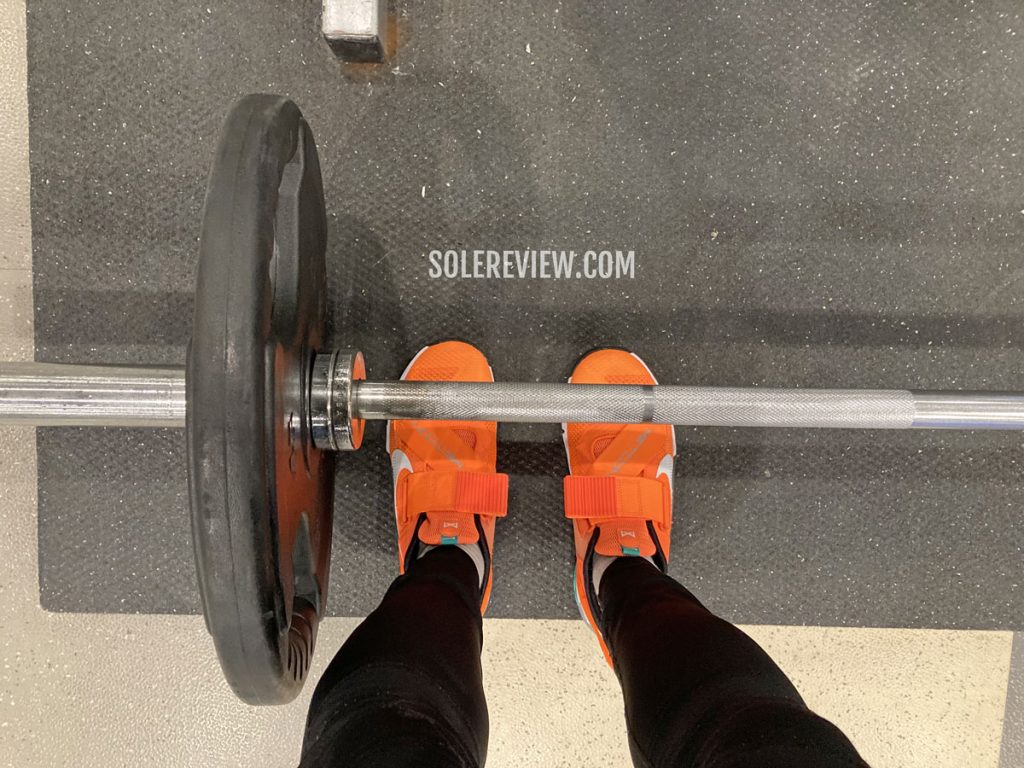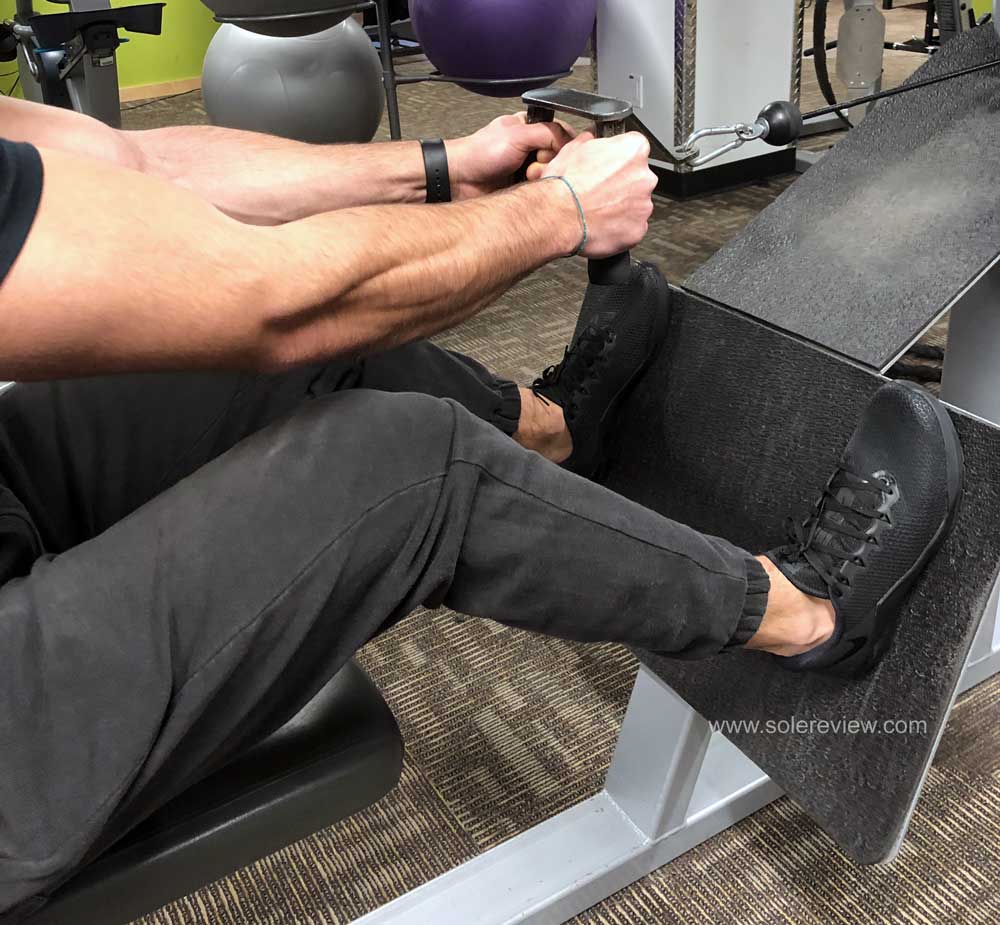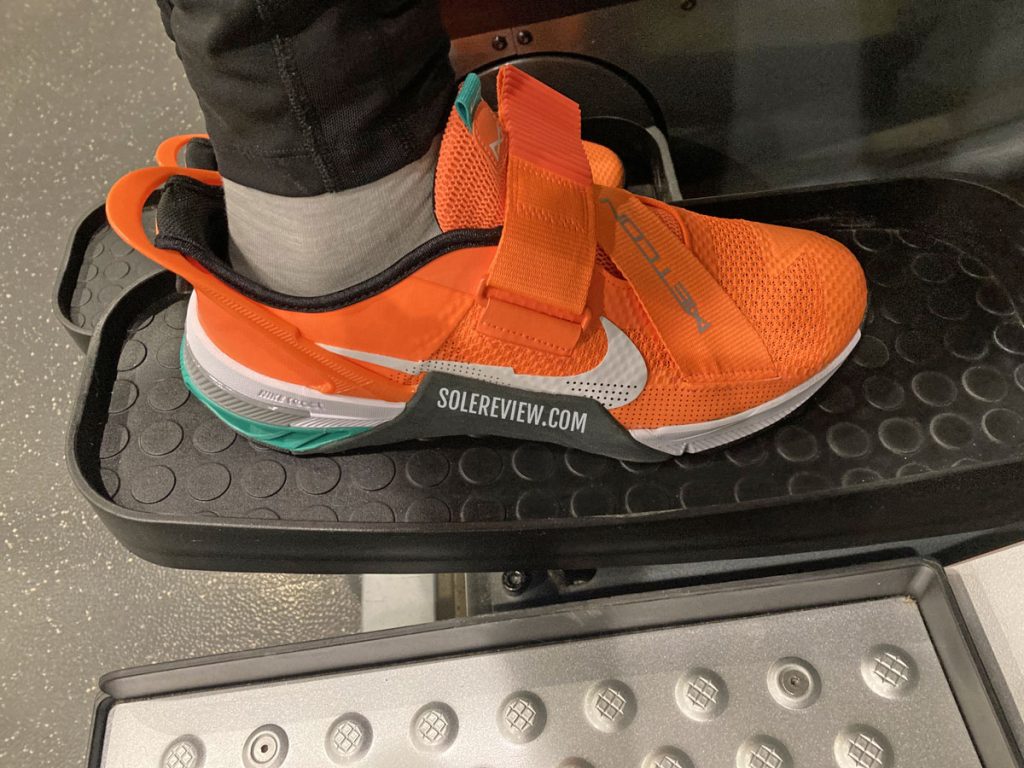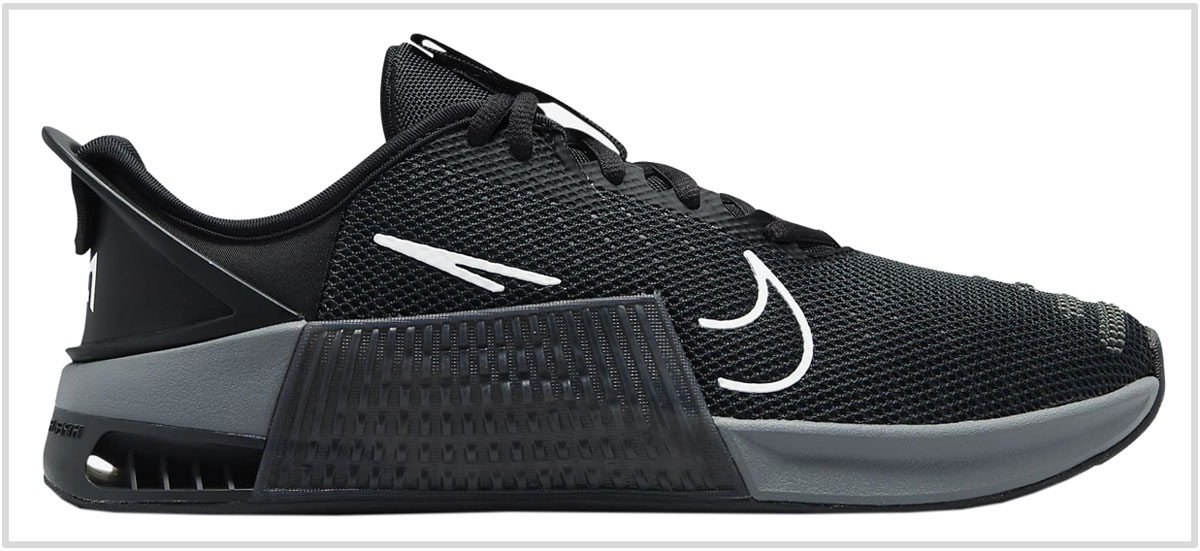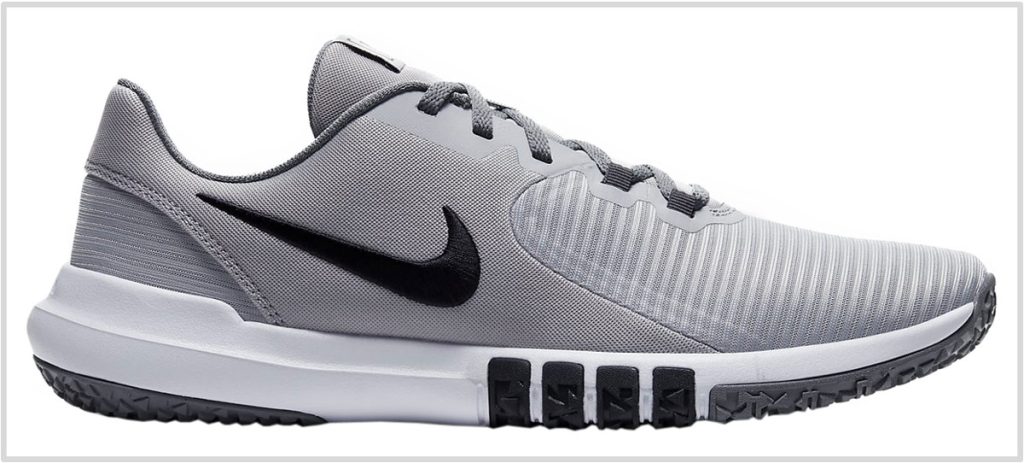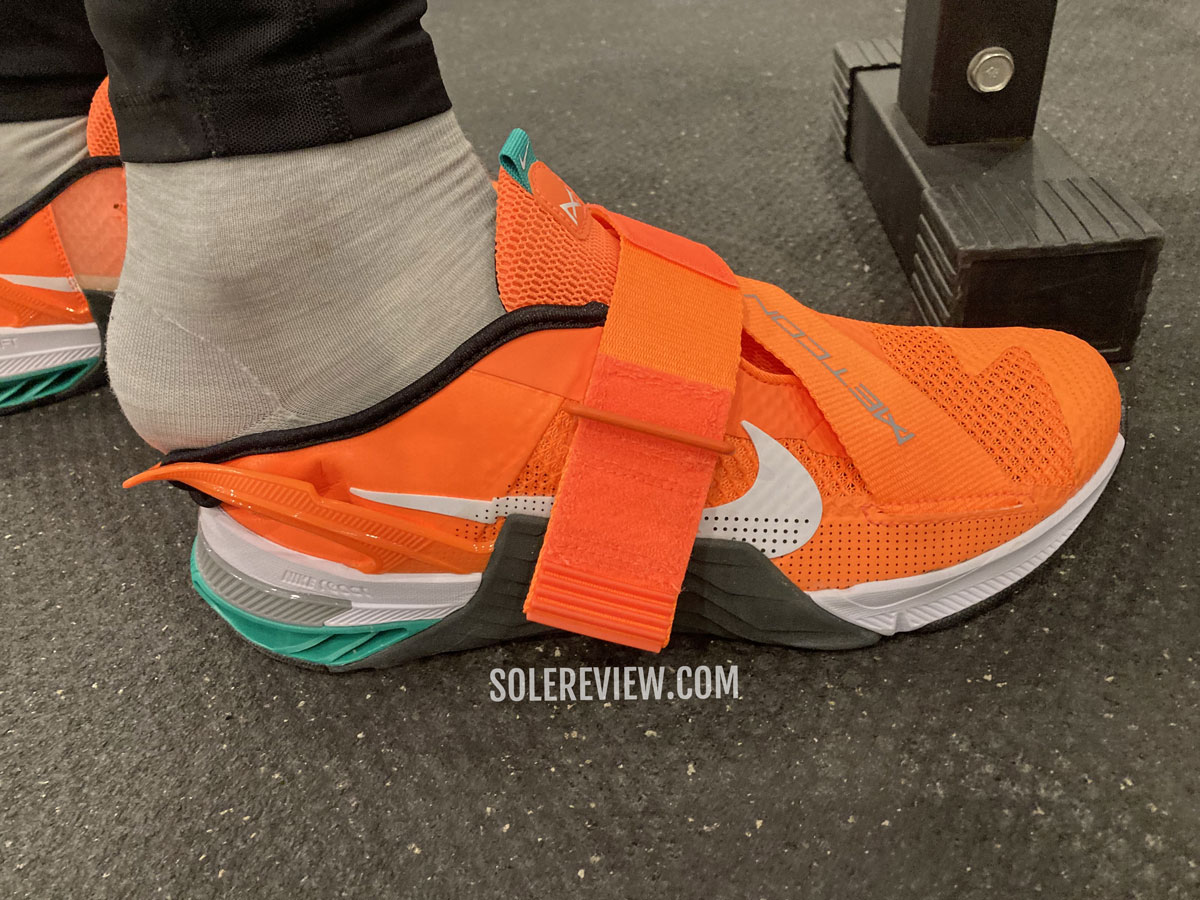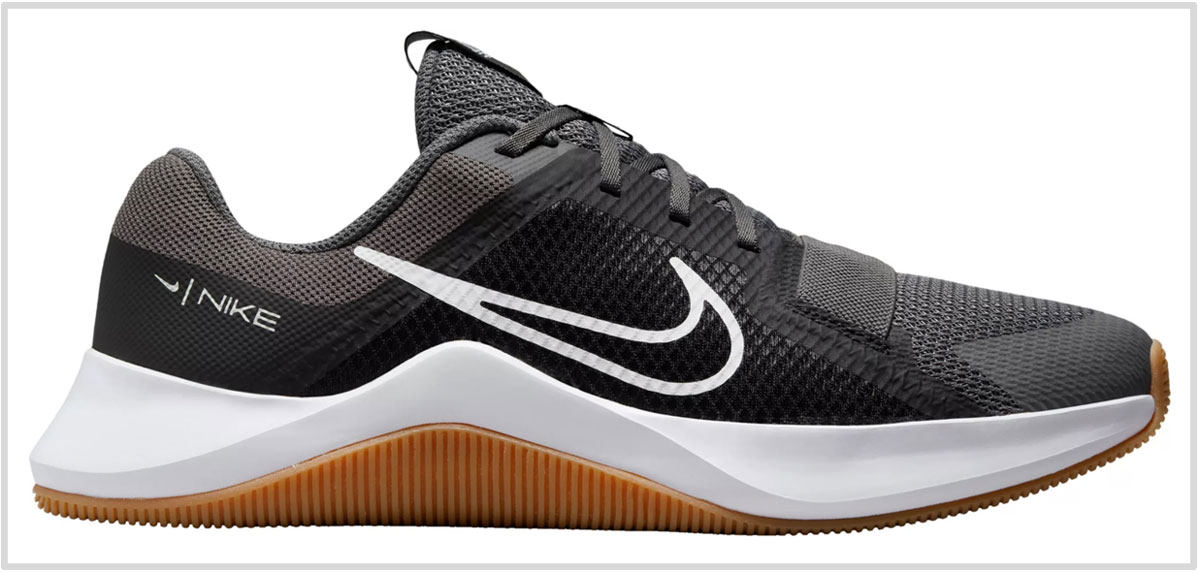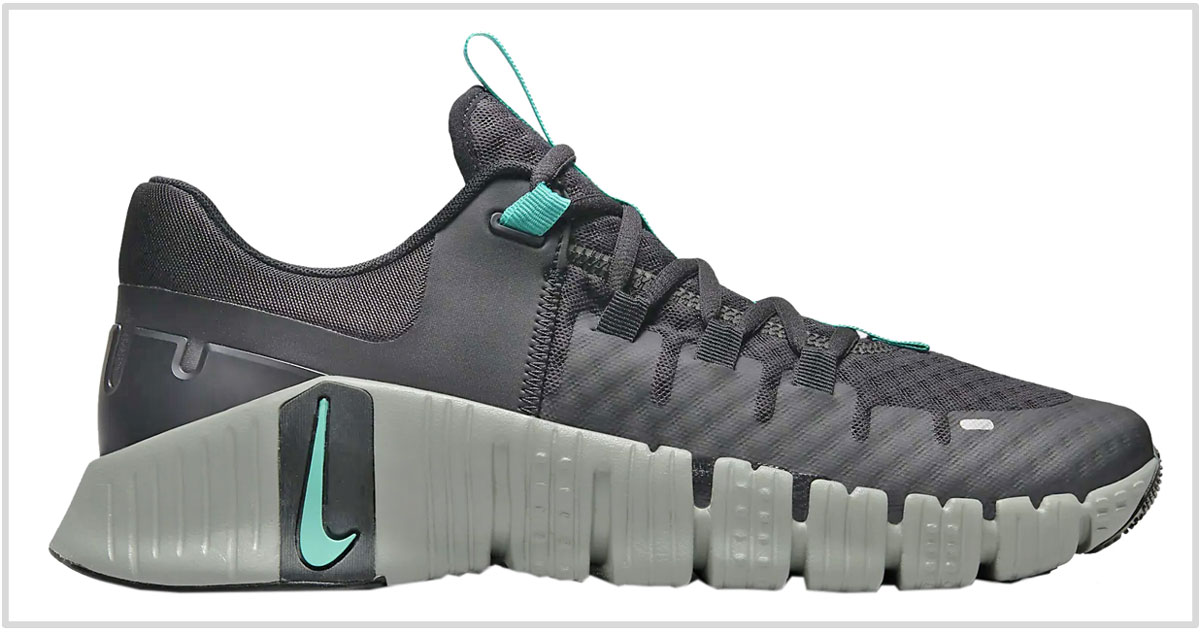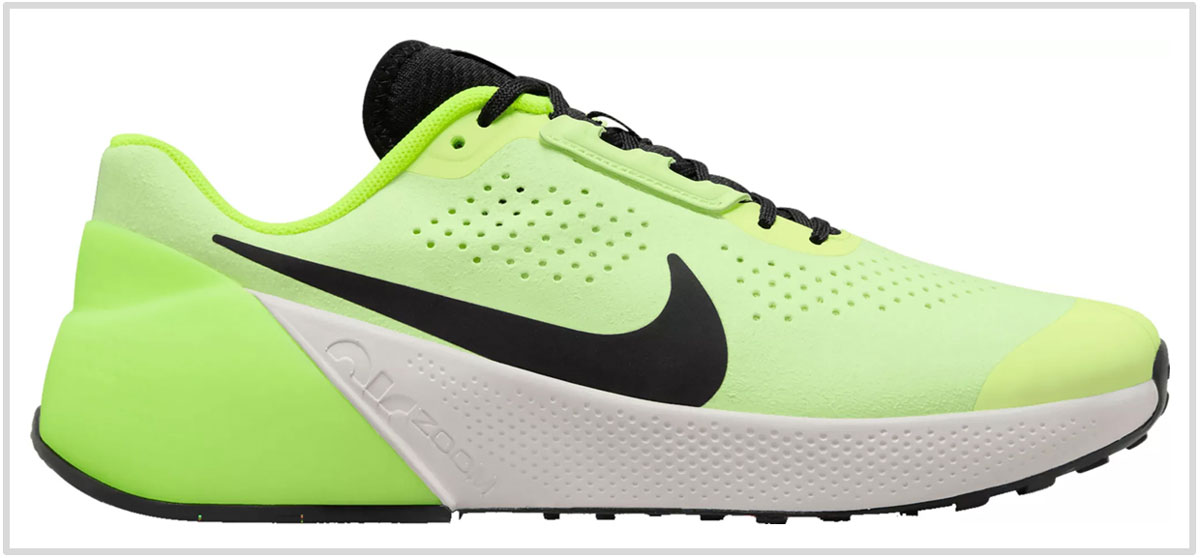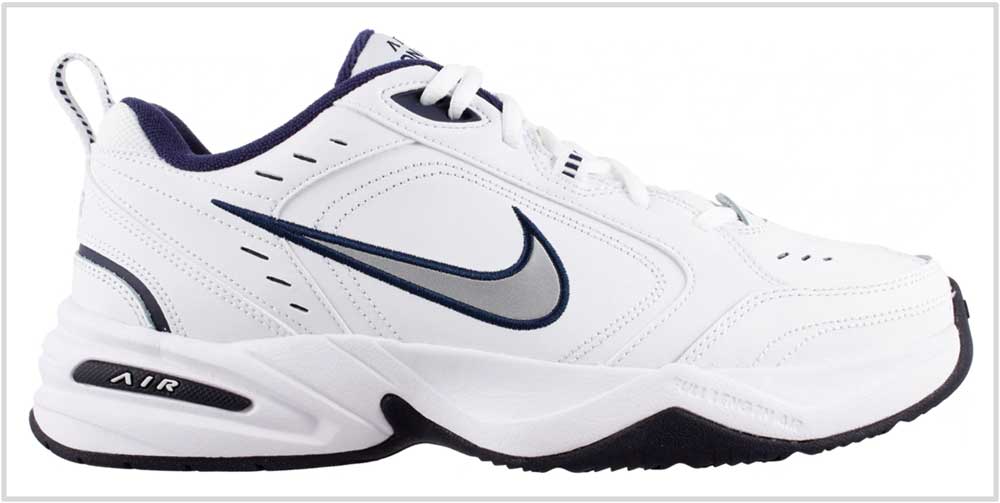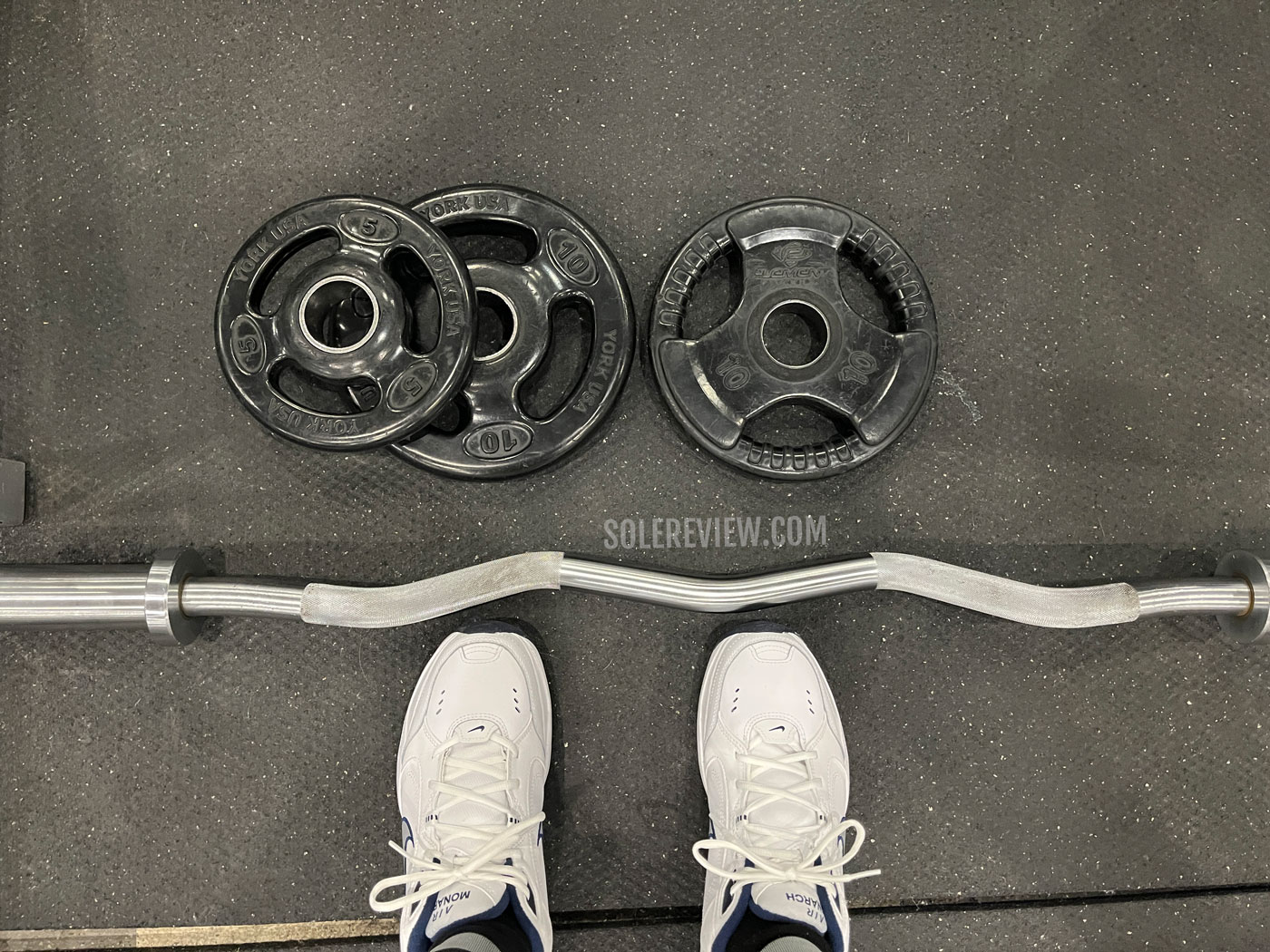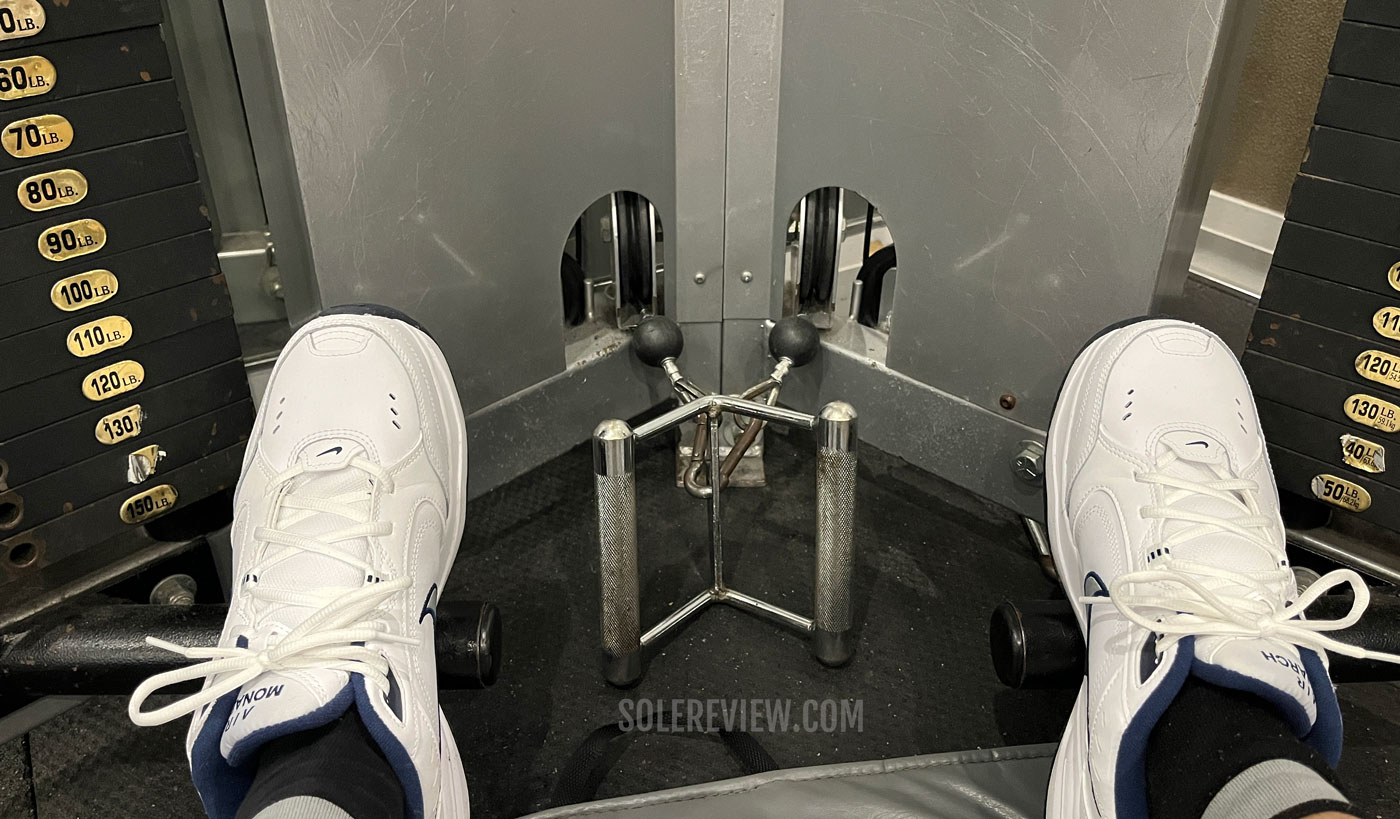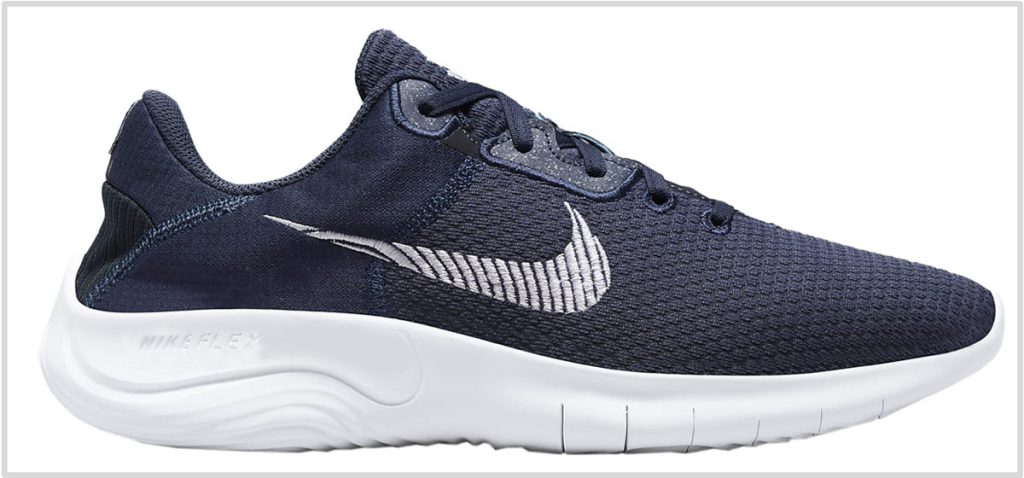This article has been updated with current models for December 2023. Most of the shoes on this guide have been replaced with their updated versions.
In this product guide:
- 1. Factors to consider
- 2. Our top pick: Nike Metcon 9 Easy On
- 3. Flexible running shoe for gym: Nike Flex Control 4
- 4. Lightweight running shoe for gym: Nike MC Trainer 2
- 5. Cushioned support shoe for gym: Nike Free Metcon 5
- 6. Cushioned support shoe for gym: Nike Air Zoom TR1
- 7. Supportive casual shoe for gym: Nike Monarch IV
- 8. Lightweight running shoe for gym: Nike Flex Experience 11
When Nike designed the Air Trainer 1 in 1987, it also invented the cross-training footwear category.
It was conceived as a general-purpose fitness shoe, as opposed to the sports-specific design approach. Or at least, that was the idea.
The Nike Air Trainer 1 wasn’t a running shoe per se, but they were good enough to run in. It had the agility of a basketball or court shoe, and the heel lift made it ideal for weight training.
Today, the term ‘gym workout’ could mean anything from traditional weight-lifting sessions to a bout of high-intensity training. Going to a gym could mean deep stretches, burpees, box jumps, and 30 minutes on the treadmill or Stairmaster.
As you can see, the one-shoe-to-do-it-all approach is a bit dated. The definition of ‘gym workout’ has evolved, and with that, the training shoe design has kept up.
Shoes like the Monarch IV have hues of the original cross-trainer concept, but there are other products with superior functionality.
So it’s important to choose your gym shoes well. What works for one person may not necessarily be a shoe that’s a good fit for another. Before buying a gym shoe – be it Nike or any other brand – it’s important to consider what kind of training is involved.
We’ve divided this buyer’s guide based on two activity groups.
Shoes for lifting and high-intensity training
Our top pick of this group is the Metcon 9 Easy On.
Strength training and high-intensity fitness programs like CrossFit require a firm and stable midsole, heel lift (higher drop), and a relatively flexible forefoot. A higher heel-to-toe offset – or heel lift – helps maintain a better balance during weight training sessions.
While Nike sells shoes like the Romaleos 4 and Saveleos that are specifically meant for power-lifting, they are impractical for other activities.
Solereview recommends: The Nike Metcon 9 Easy On
Our choice for the mixed-activity routine is the Metcon 9 Easy On. The ‘Easy On’ variant – formerly known as Flyease – has everything from the standard Metcon 9, but with accessibility-oriented features that make the shoe very easy to wear.
Despite the Metcon 9’s redesigned sole that differs from the Metcon 7 and 8, its ‘Easy on’ system is similar to the past Metcon Flyease models.
On the other hand, Nike shoes with the following design features should be avoided:
– Excessively soft and thick midsoles: Do not buy shoes like the Nike Invincible 3, as they lack the midsole stability for weight training sessions. An overly high heel stack will also get in the way.
– Running shoes with plated midsoles: Products like the Nike Vaporfly 3 are great for running, but their unstable heel makes them unsuitable for gym use.
– Nike shoes with Max Air bags: Having a large gas-filled chamber under the heel during weighted squats isn’t a good idea at all, as such midsoles lack the necessary levels of support.
We’d also keep running shoes like the Pegasus 40 off the menu. While the Pegasus doesn’t have an excessively soft midsole, it’s not supportive enough for weighted squats or compound exercises like deadlifts. If you want to stick to a running shoe, the Nike Structure 25 fares better due to its more supportive ride.
Shoes for plyometrics, aerobics, treadmill runs
Within this group, Solereview’s recommended shoe is the Nike Flex Control 4. It’s an affordable shoe (MSRP $70) with an optimal blend of flexibility, comfort, and support.
Training shoes like the Metcon 9 don’t do very well on the treadmill. Sure, you can run in them, but they feel clunky. That’s understandable, considering that aspects like the midsole stability and overall protection are prioritized.
This is also relevant for plyometric activities like jumps, lunges, or aerobics – where a bulky shoe proves to be sub-optimal.
Solereview recommends: The Nike Flex Control 4
Here, we need shoes that are flexible, yet supportive and lightweight. Some ride comfort doesn’t hurt either. For plyos like jumps, lunges, or aerobic activities, a low-profile and flexible midsole helps.
Thus, it only makes sense that we’ve sorted the shoes into two categories.
Recommended Nike products for weight training and high-intensity training
1) Nike Metcon 9 Easy On
The Metcon 9 is sold in more than a single variant, and the ‘Easy On’ version is the best. It shares the same midsole and outsole with the standard Metcon 9, but is easier to wear – thanks to the heel clip. The spring-like clip collapses when you step on it, and returns to its original position once the shoe is worn.
The Metcon 9 gets a new midsole and upper, but it retains most of the features from the Metcon 7 and 8.
Among the updates, the rubber wrap has been reinforced and widened in the midfoot. This update makes a J-hook easier during rope climbs.
Like the last time, the midsole has a stiff TPU heel lift and a React foam midsole. The shorter grooves under the forefoot make the Metcon 9 slightly less flexible than before. In lieu, the Metcon 9 delivers a planted feel with high levels of stability.
It’s an excellent shoe for most weight-training sessions, unless we’re talking squats that exceed 140 kilos/300 lbs – in which case it’s going to be safer to train in the Romaleos 4 or Saveleos instead.
2) Nike MC Trainer 2
The MC Trainer 2 is $10 more expensive than last year, but the latter’s $80 retail price and versatile character makes it an excellent value proposition. Except for minor upper tweaks, the MC Trainer 2 is nearly identical to the MCT 1.
It strikes a great balance between being a weight trainer and plyometric-friendly shoe. The single-density foam midsole provides a comfortable and relatively flexible ride that works well across a variety of workouts.
The wide rubber outsole grips very well and creates a stable foundation for lifting sessions. The midfoot wrap is a toned-down version of the Metcon; the wide flanks are compatible with rope climbs.
At the same time, the flex grooves make the MC Trainer 2 a decent treadmill and Plyo shoe. The lacing loops on the comfortable mesh upper help deliver a secure fit during vertical and side-to-side movements.
3) Nike Free Metcon 5
This Metcon variant draws its design inspiration from the Nike Free. The deep grooves on the Free Metcon 5’s midsole make it more flexible than the regular Metcon.
Just know that both the Metcon 4 and Metcon 5 share an identical midsole architecture, so the difference in performance is negligible. If you own a pair of the Free Metcon 4, we don’t recommend upgrading.
Lunges and jumps are easier with the flexible forefoot, and the stable heel works for strength-training. The heel midsole has a supportive ‘strut’ on the side, and the solid rubber base keeps the foot planted during lifting sessions.
The sock-like upper is cleverly designed. The raised midsole walls support the upper, whereas the lacing loops help create a secure fit.
Recommended shoes for plyometrics, aerobics, and treadmill
1) Nike Flex Control 4
The Nike Flex Control 4 has the flexibility and agility of a running shoe. It also has the stability that Plyometric and aerobic gym exercises require. Its low-profile cushioning also works for treadmill use.
The periphery of the outsole is supported by lugged slabs of rubber that grip the floor during vertical and side-to-side movements.
The raised midsole under the heel cups the foot; this makes the Flex Control supportive enough for moderate weight-training sessions. The foam channel on the outsole also keeps the weight centered for stability.
Even though the upper is made mostly of mesh, the tightly knit texture and layered reinforcement prevents the foot from sliding sideways during shearing movements.
2) Nike Air Zoom TR1
Most training shoes tend to have a stiff ride, so the Nike Air Zoom TR 1 is your shoe if you want a cushioned yet stable ride.
The cushioning comes from the full-length Zoom Air unit and foam midsole; working in tandem is the block heel that stabilizes weight-training sessions. The forefoot has tiny waffle lugs and flex grooves for grip and flexibility.
These features make the Zoom TR 1 an excellent multi-purpose gym shoe. The midsole is supportive enough for weights while being flexible enough for Plyometrics.
The upper also ties into the overall comfort story. The soft materials take no time to break in, and the padded heel makes the interiors comfortable. The loop-based lacing is quick to cinch.
3) Nike Monarch IV
The Nike Monarch IV may be the ultimate ‘dad’ shoe, but its wide and supportive midsole proves useful inside the gym. That’s not surprising, considering that the Monarch’s design is based on a cross-trainer. The Monarch is what most training shoes used to look like during the 90s.
The wide outsole footprint makes the Monarch IV stable enough for weight-training sessions, whereas the cushioned midsole and its full-length Air unit add comfort.
The stiff heel counter also acts as a stabilizer, and the durable upper (synthetic + genuine leather) securely locks the foot in. Read our review to know more about the Monarch IV.
The outsole is generously clad with rubber, so the traction is excellent on rubber mats and other gym surfaces.
4) Nike Flex Experience Run 11
The Flex Experience Run 11 is not meant to be a training shoe. That said, it has many plyometric and aerobic-friendly features. This is the most flexible and minimal shoe on this guide, and that makes it an excellent choice for box jumps and burpees.
The low-profile midsole allows an efficient power transfer for vertical jumps, and the ultra-flexible forefoot is perfect for burpees. And this being a running shoe, using the Flex Experience as a treadmill shoe is a no-brainer.
It’s worth noting that the Flex Experience 11 is a better shoe for gym use than the Flex Experience 10. That’s because the rearfoot midsole no longer has the deep flex groove, thus increasing the rearfoot stability.
The $70 MSRP doesn’t hurt either.
Do you own any of these shoes? Improve this review by sharing your insights – submit a review here.

